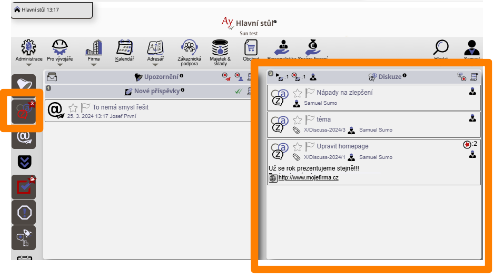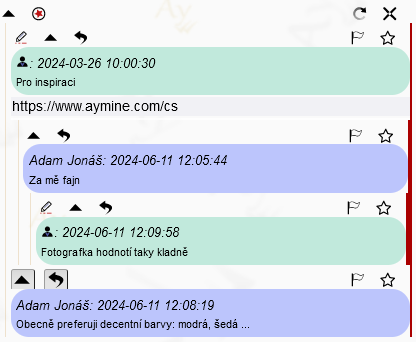AyMINE – Technical documentation
Modules
 Task, project & quality management
Task, project & quality management
Manager approval with the task report
Why some data can't be deleted
Adminitration of areas, projects, calendars
Region / project / methodology
Change management process in a project
GDPR and record of qualifications
Qualification of user or contact
Right to Manage Qualifications
Failure Analysis for an Individual Property of a Component or Process
FMEA – Probability of Detection
FMEA – Probability of Occurrence
 Task, project & quality management
Task, project & quality management
Administration of the Task Management Module
System rights for the task management module
Improvements and Preventive Measures
Methodology and Quality Management systems
What a methodology / QMS consists of
Problems, tickets and their management
Collaborative Resolution of Multiple Problems
Customer Service Response Generation
Incident and Quality Issue Management
Objects affected by the problem
Problems, Incidents, Helpdesk Tickets
Return project plan by baseline
Sample tasks and methodologies of the area
Effect of the task on the right to modify the attached object
The person responsible for the task
Working procedure – task definition
Objects related to the task pattern
 Contacts and directories module (CRM)
Contacts and directories module (CRM)
Order overview for customer groups
 Contacts and directories module (CRM)
Contacts and directories module (CRM)
System Permissions and CRM Module Settings
Send bulk messages in compliance with GDPR
How to correctly forget a person's details
Unsubscribe and set preferences
for bulk mail
 Web management and automation
Web management and automation
Receiving a message from the web
Human resources
Personalistics – User Permissions
Human Resources module security
Manage department / division data
Overview of Personnel Information for pracov# Employment Contract
Synchronizing staff and system users
 Products, assets and sales
Products, assets and sales
Received order for goods or services
Finance management
Metrics and Measurements
Technical Modules
Sabre plugin module
Enterprise Architect connector
Database link to Enterprise Architect database
Enterprise Architect connector
System Modules
 The AyMINE Framework Module
The AyMINE Framework Module
AyMINE — Tips for Mobile Usage
Configure how your system looks and works
Gestures and Keyboard Shortcuts
More about how the system works
Private notes and tags for objects
Overview of Modules and Record Types
Filtering in the list of records
 System Management
System Management
Additional functions with files
Copying and moving files between objects
Files (documents) linked to the object
Formatted texts in the application
Gateway settings for external messages
IMP gateway settings for email communication
Internet Call Gateway Settings
Message with the outside world
 Discussion
Discussion 
Discussions allow opening discussion threads on any topic

Internal Discussions
The logic of the discussion is similar to discussions in applications like WhatsApp or Signal, but unlike them, the entire discussion takes place in the protected environment of the company or organization.
The second major difference from threads in the mentioned applications is that it has a factual topic – a subject that the discussion is about and which opens the entire discussion. The discussion then develops in the usual way, but from the beginning, it has a clearly defined topic that should remain the focus.
The factual topic should help:
- Keep the discussion on track and prevent it from drifting away from the subject
- Facilitate easy retrieval of the discussion later
- Allow others to join the discussion later, as it is clear what the topic is

Public and Private Discussions
Discussions always belong to one of the defined areas. People who have access to the area (active or as readers) can participate in any discussion from that area. Conversely, those who do not have access to the area cannot learn about the discussion in the system.
Discussions created on the main workspace are automatically placed into the standard group, which is typically visible to all internal users.
##Participants
Participants are people from the groups connected to the discussion. The discussion founder selects the groups to involve in the discussion – they can attach multiple groups.
In the discussion, the actual participants are:
- People from the groups chosen by the discussion founder
- People who joined the discussion themselves. Anyone who can see the area where the discussion is held can join.
- Conversely, people who were originally added to the discussion but then left are not included
Good to Know
Public Discussions May Not Be for Everyone
Access to public discussions is governed by access to the group where these discussions are placed. For example, if you have external users and do not want them to see internal discussions, set the group with access to the discussion area to internal workers only. External collaborators will then not have access to internal discussions.
Oblast pro veřejné diskuze
Area for Public Discussions
The area used for public discussions is set by the administrator in the tsk module settings. More information in the administration of the tsk module.
Discussion on Records
You can read about discussions tied to records here.